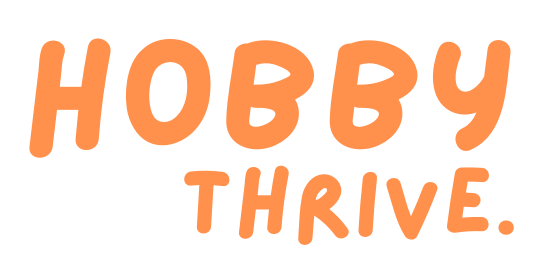Calligraphy and typography are two distinct yet interconnected art forms that shape the visual representation of written language. Calligraphy, with its rich history dating back centuries, focuses on the creation of elegant and expressive letterforms by hand. Typography, on the other hand, involves the art and technique of arranging typefaces and designing visually appealing layouts.
In this article, we will explore the fascinating relationship between calligraphy and typography, highlighting how these two disciplines can be blended to create captivating and harmonious compositions. We’ll delve into the roots of calligraphy and typography, examine their unique characteristics, and discuss ways to merge traditional and modern elements to produce visually stunning and impactful designs.

Understanding Calligraphy
Calligraphy, derived from the Greek words “kallos” (beauty) and “graphein” (to write), is an art form that involves the creation of gracefully executed lettering. It has been practiced for centuries and is deeply rooted in cultural traditions worldwide. Here are some key aspects of calligraphy:
Historical Styles: Calligraphy encompasses various historical styles, such as Copperplate, Spencerian, Gothic, and Italic. Each style has its distinct characteristics, strokes, and letterforms. Traditional calligraphy often emphasises precision, balance, and ornamental flourishes.
Tools and Techniques: Calligraphy is primarily executed using dip pens, brushes, or fountain pens. The practitioner relies on the pressure and movement of the hand to create thin and thick strokes, achieving a dynamic and rhythmic flow. Mastery of calligraphy requires patience, practice, and a deep understanding of letterforms.
Expression and Individuality: Calligraphy offers a unique avenue for self-expression. Calligraphers can infuse their personal style and artistic interpretation into their work, adding a sense of individuality to each piece. The beauty of calligraphy lies not only in the final product but also in the process of creating it.
Exploring Typography
Typography, while sharing similarities with calligraphy, focuses on the design and arrangement of typefaces to convey information effectively and aesthetically. Here are key aspects of typography:
Typefaces and Fonts: Typography relies on a vast array of typefaces and fonts, each with its personality and characteristics. Serif, sans-serif, script, and decorative fonts are just a few examples. The choice of typeface greatly influences the visual impact and readability of a design.
Hierarchy and Layout: Typography involves skilfully organising and arranging type to establish a hierarchy of information. By varying font sizes, weights, and spacing, designers guide the reader’s eye through the content, emphasising key elements and creating visual hierarchy. Well-executed typography ensures clarity and readability.
Grid Systems: Grid systems provide a framework for organising and aligning type and other design elements. They establish consistency, balance, and structure within a layout. Grids can be used to create visually pleasing compositions and maintain harmony between text and other graphical elements.
Digital Typography: With the rise of digital media, typography has expanded its horizons. Designers now have access to a myriad of digital typefaces and can experiment with interactive and responsive typography. Digital platforms offer new possibilities for dynamic and animated typography, adding an extra layer of creativity.
Blending Traditional and Modern Styles
Blending traditional calligraphy with modern typography techniques can result in visually striking and unique designs. Here are some approaches to consider:
Fusion of Letterforms: Combine the elegance and fluidity of calligraphic letterforms with modern typography. Experiment with integrating calligraphic elements into the design, such as using hand-drawn initials or embellishing certain characters with calligraphic flourishes. This fusion can infuse a sense of craftsmanship and authenticity into modern designs.
Typeface Selection: Choose contemporary typefaces that possess calligraphic qualities. Look for fonts that mimic the fluidity of calligraphy while maintaining a clean and legible appearance. These typefaces can add a touch of sophistication and elegance to modern designs.
Hand-Lettered Typography: Create customised typography by hand-lettering words or phrases. Use calligraphic techniques to draw letters, experimenting with different styles and flourishes. This approach adds a personal and organic touch to typographic compositions.
Ornamental Embellishments: Incorporate decorative elements inspired by calligraphy to enhance typographic designs. Intricate borders, filigree patterns, or ornate illustrations can be used to frame or complement the typography, adding visual interest and depth.
Experiment with Layout: Play with the arrangement and hierarchy of type to create visually engaging compositions. Combine calligraphy with modern typography principles, such as grid systems or asymmetrical layouts, to achieve a harmonious balance. Experiment with overlapping, layering, or breaking the grid to add dynamism and visual impact.
Digital Calligraphy: Leverage digital tools to merge calligraphy and typography seamlessly. Usedigital calligraphy brushes or tablets to create calligraphic lettering directly in digital formats. This allows for greater flexibility, editing options, and the integration of calligraphy into digital designs.
Conclusion
Blending traditional calligraphy with modern typography techniques opens up a world of creative possibilities. By combining the timeless elegance of calligraphy with the versatility of typography, designers can create visually captivating compositions that honor the past while embracing the present.
The fusion of traditional and modern styles in calligraphy and typography allows for the expression of individuality, the exploration of new design approaches, and the creation of visually stunning works of art. Whether it’s integrating calligraphic elements into contemporary designs or using modern typography techniques to enhance traditional calligraphy, the possibilities are endless.
As technology continues to evolve, the boundaries between calligraphy and typography will further blur, presenting exciting opportunities for innovation and creativity. By embracing the rich heritage of calligraphy and harnessing the power of modern typography, designers can continue to push the boundaries of visual communication and create designs that leave a lasting impression.





